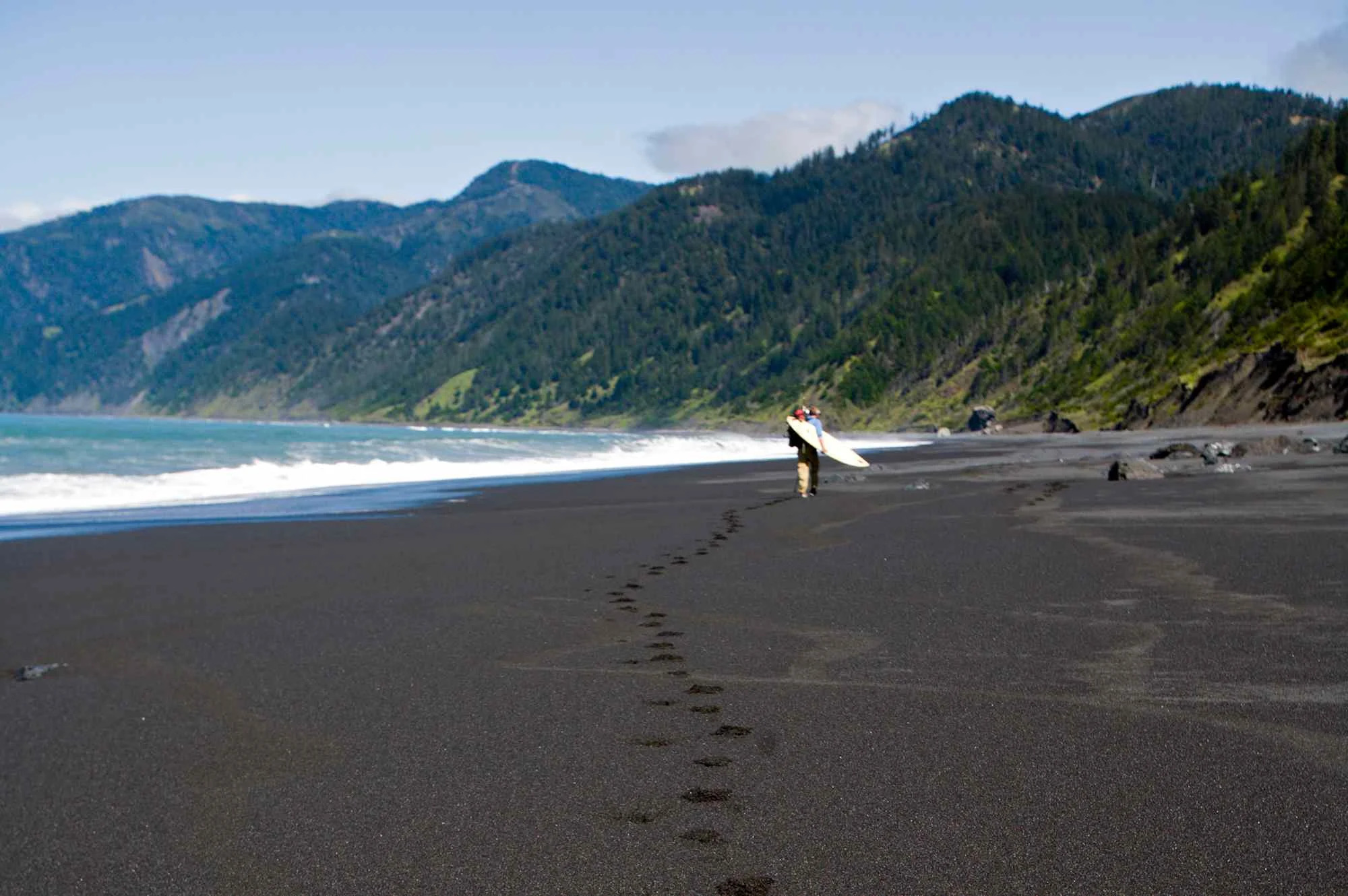This Remote U.S. Trail Has This U.S. Trail Has Black-sand Beaches, Elk Herds, and Is a Silent Haven With No Cell Service or Crowds

The Pacific Coast Highway is one of America’s most iconic drives—a ribbon of asphalt tracing California’s golden edge. But there’s a place where the road simply gives up. Where the mountains rise so dramatically from the ocean that engineers were forced to reroute the highway inland. What remains is the Lost Coast, a raw and remote stretch of shoreline where the landscape refuses to bend to development, and where hikers trade cell service for sea lions.
The Lost Coast Trail, a roughly 25-mile route between Mattole Beach and Black Sands Beach, cuts through the dramatic King Range Wilderness. It’s not merely a hike—it’s a passage into a world shaped by wind, water, and time. Fog wraps the cliffs like gauze. Bluffs crumble into black-sand beaches. And the rhythm of travel is governed not by schedules, but by the tide.
There are no inns, no roadside cafés—only kelp-strewn shorelines, the rustle of elk in the brush, and paw prints from creatures you may or may not ever see. Solitude here is not a luxury but a given.
AdvertisementAdvertisement#_R_ahmab8lb2mav5ubsddbH1_ iframe AdvertisementAdvertisement#_R_ihmab8lb2mav5ubsddbH1_ iframeThe trail's remoteness is rivaled only by its dependence on the Pacific. Several stretches are impassable at high tide—and on certain days, the ocean never recedes enough to allow safe passage at all. Hikers must plan their journey with the precision of a sailor: each day choreographed around tide tables and narrow windows of safe crossing.
Beyond its reliance on the tides, Lost Coast Trail showcases a side of California most people rarely see—one of solitude and stillness. The trail runs from bluffs and rocky boulder fields to the beach, where tide pools brim with starfish and coastal birds soar overhead. Glittering black-sand beaches are littered with sea lions and elephant seals, while a lucky few might spot a roaming black bear or elk, creatures that are also enjoying the stillness.
Most hikers complete the roughly 25-mile trail in two to four days, though some opt to break it into sections. For overnight stays, a permit (and in some cases, a campfire permit) is required.
PermitsHikers looking to do the full Lost Coast Trail as a backpacking trip must get an overnight permit for the King Range Wilderness. Permits can be reserved 90-days prior to entry and there are also a few walk-up permits available at the King Range Visitor Center by lottery. Permits are required year-round for overnight use.
AdvertisementAdvertisement#_R_b5mab8lb2mav5ubsddbH1_ iframe AdvertisementAdvertisement#_R_j5mab8lb2mav5ubsddbH1_ iframeCampingCamping along the Lost Coast Trail is pretty straightforward: Once you have a permit, you are allowed to camp anywhere between Mattole Beach and Telegraph Creek (which is just north of Black Sands Beach at Shelter Cove). There are plenty of naturally flat campsites along the beach and in the bluffs, most of which are adjacent to a creek that provides water.
A campfire permit is required to operate camp stoves or build campfires. Campfire permits are available at permits.preventwildfiresca.org.
Read the original article on Travel & Leisure














